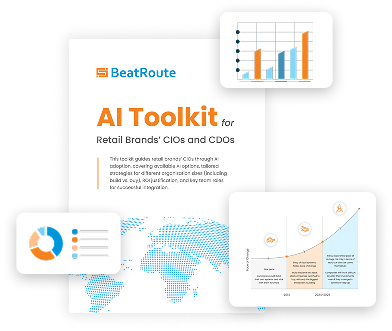Unlocking B2B eCommerce Potential for Consumer Goods Brands with a Customer App
In the consumer goods industry, almost all businesses deal with multiple B2B Customers such as distributors, dealers, wholesalers, and Institutions to whom they sell directly. Then these B2B partners take care of sales down the distribution chain leading to final consumers.
In such kinds of businesses unlike FMCG, companies aren’t much concerned about knowing to whom these B2B partners are selling, their primary objective is to maintain an engaging B2B relationship for their primary sales.
In such cases, companies need a platform that can facilitate this kind of B2B Ecommerce with their list of customers. The sales team works on generating different leads which are ultimately converted to customers from the opportunity funnel.
To have a great working relationship with these B2B customers – there are 2 parts:
- Operational execution
- Customer Engagement
Let’s have a look at how to solve both of them. A customer app proves to be a powerful means of engaging with such customers, let’s find out how can a customer app be utilized to facilitate B2B eCommerce while solving a great working relationship with customers.
Operational Execution
- Catalog Setup & Order Execution
The brand needs to set up its catalog for customers to place self-service orders with complete visibility to the sales team, distributor partners, and sales managers. The customer app provides a closed-loop action on each order placed by the customer herself similar to what happens when the sales team is placing orders.
- Order Status Visibility
In B2B use cases, after an order is received customer needs to know whether that order is accepted based on available inventory. In addition to order acceptance status, customers need to know the status of orders which are in processing.
- Payment Terms alignment
These B2B customers have a credit line being provided in most cases, different companies have different modus operandi in terms of collecting these payments, extending additional credit, or blocking accounts if payments are not done, payment-terms based schemes application. Companies need the B2B customer app to align these payment terms, credit application & inventory requirements matchup with the supply point.
- Visibility to the Sales team
Any order placed by customers – The sales team assigned to these customers needs to have visibility. Brands need to commission their sales reps on all orders from their respective retailers, even those that come through the portal. If brands don’t do that, sales reps are not only demotivated to promote the portal, they may actively block its usage, asking their customers to order through them instead.
- Different Interface for Different Personas of Customers
There are different personas of customers, depending on their size of operations, and the no. of people handling it. To handle those cases, brands need to provide different interface options such as WhatsApp/App/Web and interoperability between each of them.
- Primary Schemes Configuration
Brands need to create different types of schemes & target them based on customer subtype, channel, geography, etc. Any B2B portal deployed needs to ensure the awareness of schemes to customers through nudges, auto prompt of schemes against relevant product categories, & application of them in the orders being placed. Scheme setup should be a high configuration self-serve environment & accommodate all types of schemes relevant to the business.
Customer Engagement
Now since most of the transactional part is covered, here comes how can they maximize the relationship in terms of engagement. So let’s have a view of the present landscape of these platforms: These platforms mainly focus on operational execution, adoption of these platforms by B2B customers, and engagement to drive repeat becomes an inherent challenge. A platform needs to be based on a mutual business growth philosophy. Let’s have a look at some of the elements which can power this:
- Retailer engagement through redemption integrated loyalty program
Any kind of loyalty program which is rolled out needs to be transparent in terms of achievement & rewards. B2B app for customers can facilitate continuous engagement in terms of loyalty points collected and an interface to redeem them with an integrated redemption interface which the brand can configure & customize.
- Levers to drive incremental business
Nudges that can drive business for partners in an incremental way such as – Inventory stocking out, neighborhood store buying, SKUs with schemes, and SKUs that can be added for better schemes at the time of placing an order brings out that feel in terms of driving incremental orders for the brands as well as incremental business for the customers.
- Gamified engagement
Gamified engagement to drive actions such as filling out any campaigns, recording customer feedback or survey, and Uploading a display picture can also be facilitated through B2B customer app by creating a gamified engagement philosophy where customers get some points on completion of important activities.
- Video-based content
Video-based content around the brand, new product releases, and awareness about new program launches can be pushed as in-app widgets at different stages in the journey to customers.
- Other engagement levers
Post initial adoption phase, the platform can bring in more engagement levers which can engage customers at order creation and timely nudge customers to engage dormant customers back.
About BeatRoute
BeatRoute is a sales enablement SaaS platform for consumer goods businesses. We have been working on building a customer app to facilitate B2B eCommerce through its WhatsApp/Viber/Messenger-connected customer app. From a product philosophy standpoint, with our customer app, we aim to establish the value-added engagement of brands with their retail customers instead of just transactional engagement. This is built to function on top of field team digital tools deployed presently as a modular & scalable component.
To know more about how you can execute B2B eCommerce with your dealers/retailers using BeatRoute, please get in touch for a quick demo.
About the Author
-
Nikhil is a marketing professional with a passion for enterprise SaaS and the role that technology can play in helping businesses succeed. He is passionate about enabling digital transformation for retail brands, and explores how brands can enhance their sales execution and distributor engagement with the help of technology.
Use Goal-Driven AI to Achieve Retail Sales Uplift, Today!
Join enterprises in 20+ countries that trust BeatRoute, the globally dominant AI platform for sales force automation, field sales, DMS, and eB2B
Latest Insights & Articles
Here are the most impactful articles, platform updates, ebooks and reports for you.


